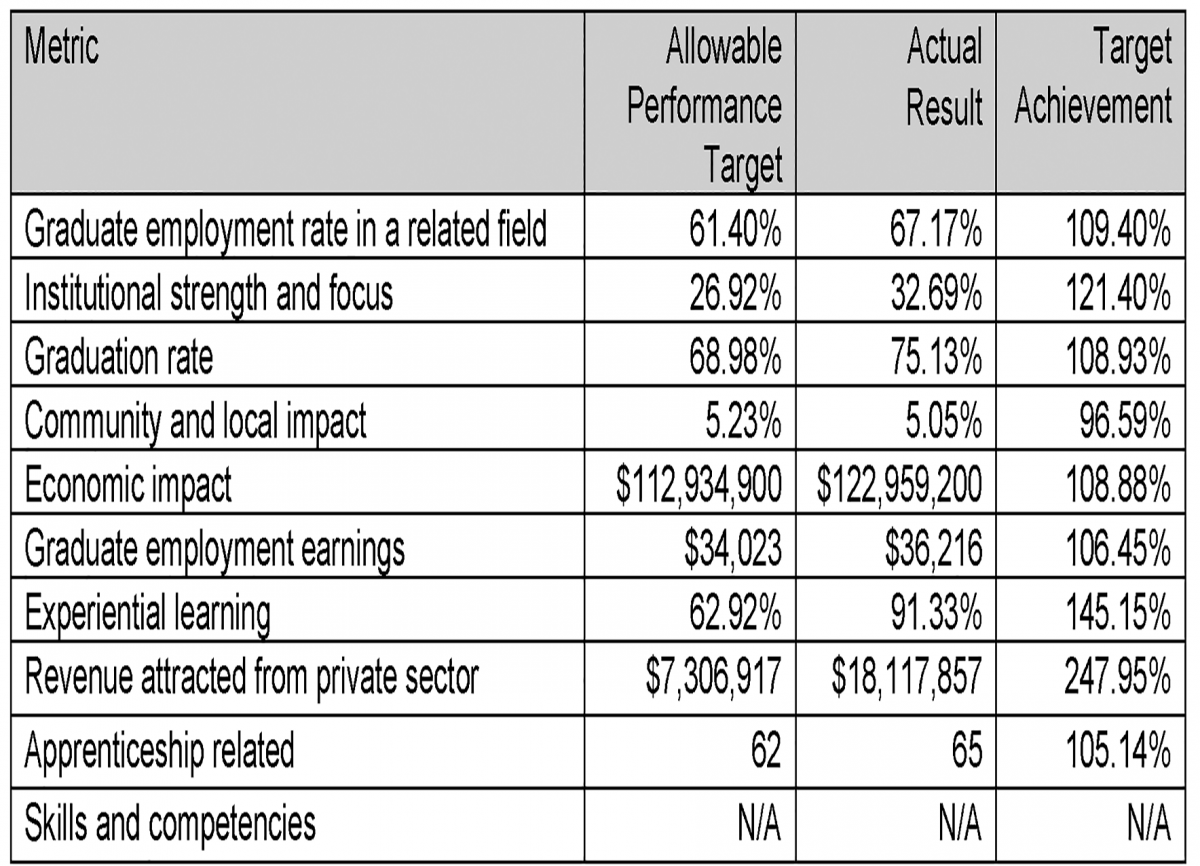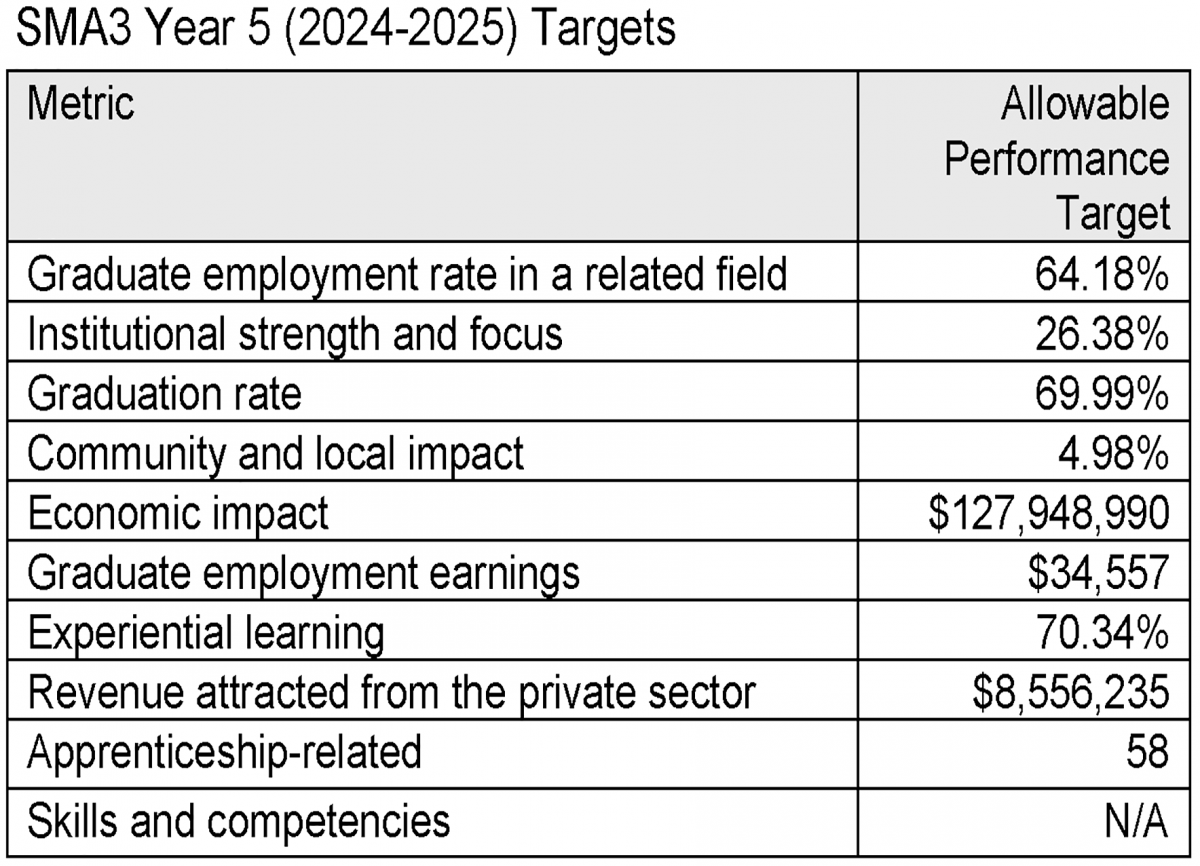
The college is achieving most of the targets associated with the new provincial government’s funding formula, according to a report on the Strategic Management Agreement (SMA) that was presented to the Board of Governors during its meeting on June 25.
SMAs are five-years-long “promises of performance” that each of Ontario’s two dozen public colleges negotiate with the Ministry of Colleges and Universities as the basis for some of their grant-funding.
Their progress on achieving those targets is reviewed every year, and can be adjusted slightly (with the approval of the Ministry).
The report presented to the Board by President Michael Silvaggi and Senior Vice-President of Finance and Administration Marc Jones depicted the results during 2023-24. That was the fourth year of the five-years-long (2020-25) SMA.
See the chart at the top of this story.
The results show St. Clair exceeding all of its goals except one: it met only 96.59 percent of its “Community and Local Impact” goal – a relatively minor portion of the total funding criteria package.
While the college is perceived as a major contributor to the economies, employment markets and community life of Windsor-Essex and Chatham-Kent, the fact that it has also had a campus presence in the Greater Toronto Area during the past decade (via its “sister school” partnership with the private Ace Acumen Academy) did not translate into it having a major impact on that gigantic city.
This funding formula is still relatively new. Indeed, the Ministry just started allocating some support grants by using this system during the past year.
Jones estimates that the one non-fully-achieved metric may cost the college a grant-funding reduction of approximately $1,600 in the coming year – a “drop in the bucket”, in view of the fact that the college receives over $40 million annually from the Ministry.
The report on SMAs also revealed the college’s slightly adjusted targets for the coming year (2024-25), as depicted in this graph:

SUSTAINABILITY STRENGTH
Another Silvaggi/Jones report to the Board depicted the current status of the college’s Sustainability Fund.
That is a “piggy bank” created by the college from the past half-dozen years of multi-millions-of-dollars budgetary surpluses. This reserve’s purpose is to help the school survive any major economic or enrolment down-turns which might arise in the future. Amazingly, the COVID-19 pandemic did not lead to such a dilemma for the school, but this year’s federal/provincial-ordered “pause” on international student immigration certainly may lead to some reductions in tuition revenue – which could be covered by injections from this reserve fund.
The report to the Board stated that the Sustainability Fund currently stands at $73,920,568, made up of $65 million in principal investment from previous years’ surpluses, plus the interest that has been earned on that investment.
That figure is far in excess of the minimum reserve required by Board bylaws. That demands a reserve equivalent to three percent of the college’s budgeted operating revenues, which are currently hovering around $340 million. Three percent of that would be about $10 million, so the current Sustainability Fund is a very healthy seven times larger than the bylawed minimum.
ANOTHER BOARD OF GOVERNORS STORY: https://news.stclair-src.org/need-know-news/program-intake-suspended-due-lack-applicant-interest







